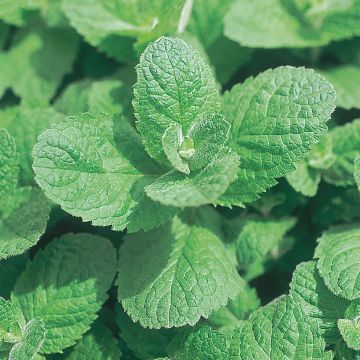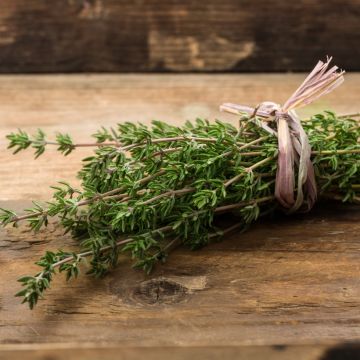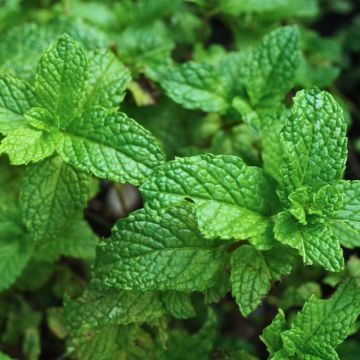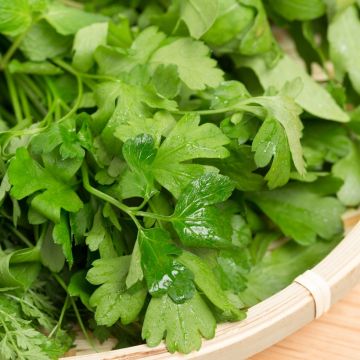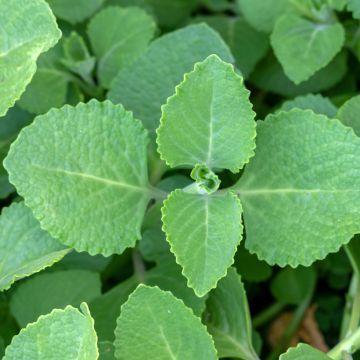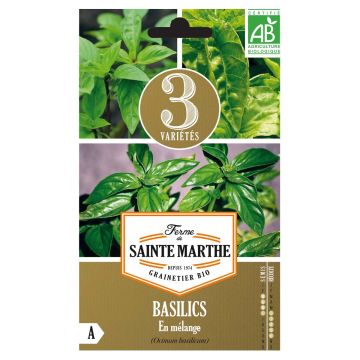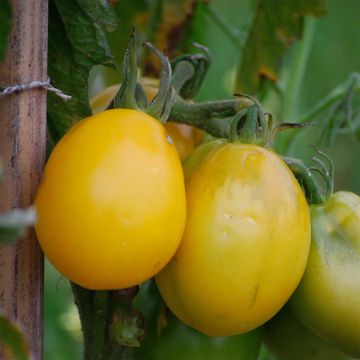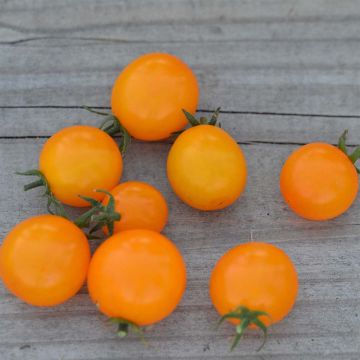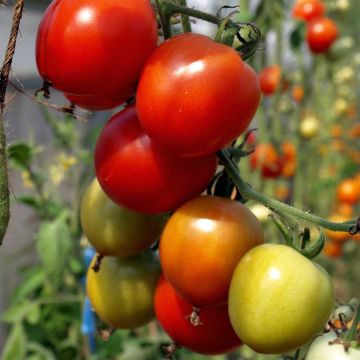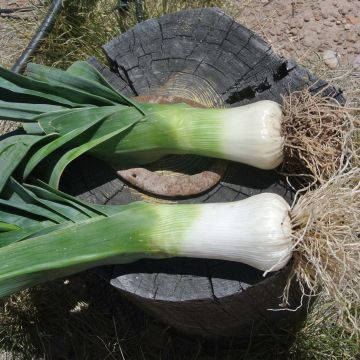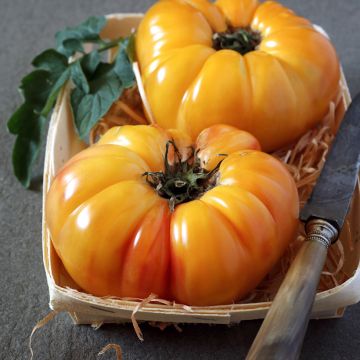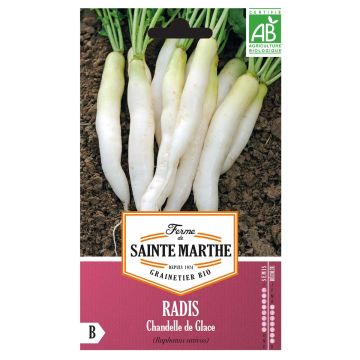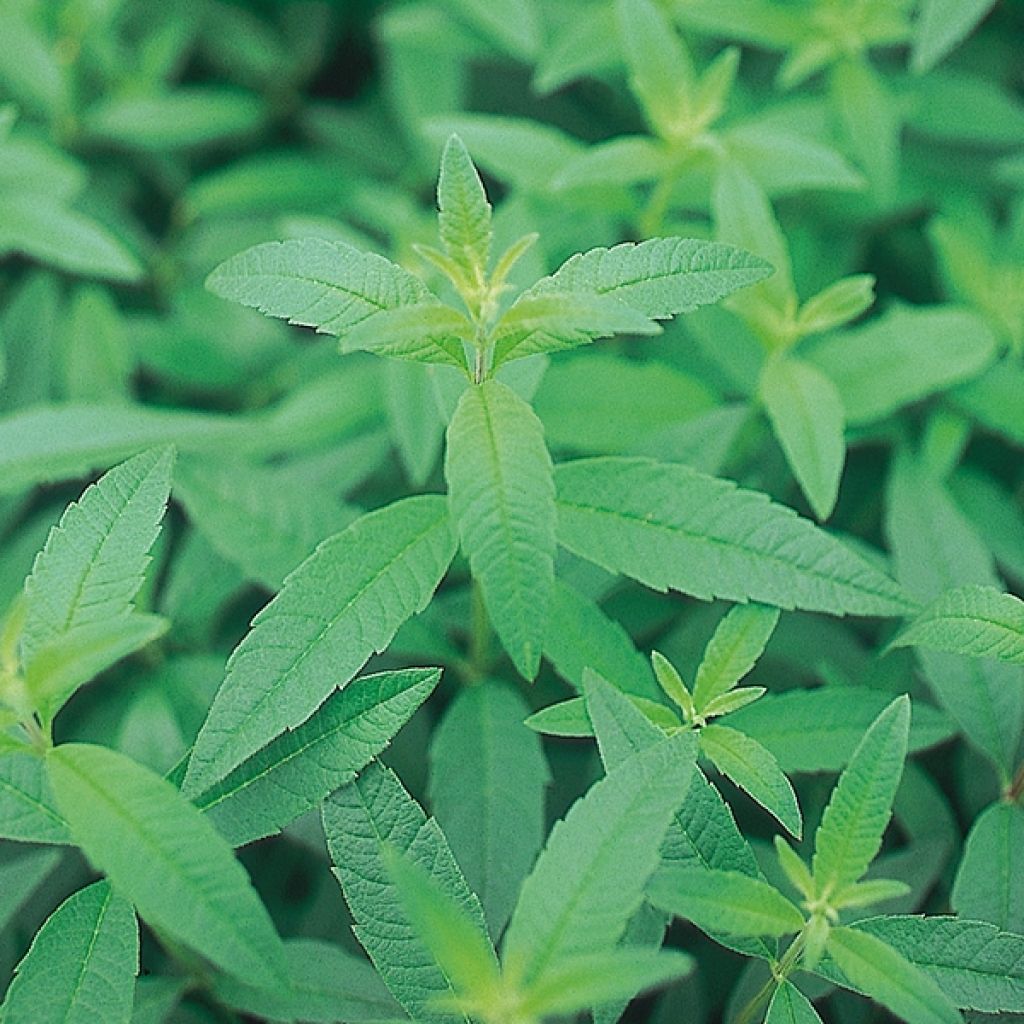

Organic Lemon Verbena - Aloysia citriodora


Organic Lemon Verbena - Aloysia citriodora
Organic Lemon Verbena - Aloysia citriodora
Aloysia citriodora
Cidron, Herb Louisa, Lemon verbena, Lemon plant, Lemon tree, Lemon-scented verbena, Limonetto, Sweet-scented verbena, Verbena oil plant
Lovely verbena that grows much better in the ground than in a pot.
Nath44, 10/05/2025
Special offer!
Receive a €20 voucher for any order over €90 (excluding delivery costs, credit notes, and plastic-free options)!
1- Add your favorite plants to your cart.
2- Once you have reached €90, confirm your order (you can even choose the delivery date!).
3- As soon as your order is shipped, you will receive an email containing your voucher code, valid for 3 months (90 days).
Your voucher is unique and can only be used once, for any order with a minimum value of €20, excluding delivery costs.
Can be combined with other current offers, non-divisible and non-refundable.
Home or relay delivery (depending on size and destination)
Schedule delivery date,
and select date in basket
This plant carries a 6 months recovery warranty
More information
We guarantee the quality of our plants for a full growing cycle, and will replace at our expense any plant that fails to recover under normal climatic and planting conditions.

Description
Aloysia citriodora or A. triphylla is a bush with aromatic leaves, famous for its delicious lemony fragrance that is both sweet and invigorating. It is appreciated in infusions, as well as for flavouring desserts. Its essential oil is used in perfumery and sometimes in aromatherapy. Lemon verbena is not very hardy. Grow it in a pot to be overwintered in a frost-free location, or in the ground in milder climates. Plant in May or June and harvest from June to October.
This plant comes from Organic Farming and is certified AB.
Lemon Verbena belongs to the Verbenaceae family. It is a small bush native to South America, specifically Peru, Bolivia, Chile, Uruguay, Ecuador, and Argentina. This tender species is not very hardy, but a mature subject can withstand brief frosts of around -8°C (17.6°F). In favourable conditions, it can reach, or even exceed, 1m (3ft) in height with a spread of 80cm (32in) when planted in the ground. It is an aromatic and medicinal plant, with long, narrow, rough, light green leaves. Its small white to pale mauve flowers gathered in thin, loose, and discreet spikes appear during summer. Its foliage releases a pleasant lemony scent in infusions, and is ideal for repelling mosquitoes in summer. The deciduous foliage withers and falls at the first frost.
It has soothing and digestive properties. Use the fresh or dried leaves in infusions. Unlike common verbena, lemon verbena also flavours sauces and marinades, desserts, or liqueurs with its lemony fragrance. It can also be used to make potpourris.
Harvesting: the leaves are harvested from June to October by cutting the stems. Harvest regularly to encourage new shoots.
Storage: the leaves can be used fresh or dried. For drying, hang bunches of stems upside down in a dry and airy place. Then store them in airtight jars.
Gardener's tip: we recommend mulching the soil with successive thin layers of grass clippings, if possible mixed with dead leaves. This protection keeps the soil moist and reduces weeding.
Report an error about the product description
Harvest
Plant habit
Foliage
Other Herb plants A to Z
View all →Planting and care
Plant in May-June, either in the ground or in a pot. It is not very hardy, tolerating only light frosts. However, an established plant aged 3-4 years can withstand an occasional frost of around -8°C (17.6°F). Once its stems are lignified, it can tolerate the cold better than young plants. It is a water-saving species that often does without summer watering in the ground, except in dry regions.
It is advisable to soak the root ball in water just before planting.
In the ground
Plant in full sun, in rich, well-drained and slightly moist soil. Add well-rotted compost in the previous autumn. If your soil is very wet, put some gravel at the bottom of the planting hole. Dig a hole (3 times the volume of the root ball), place the root ball, and cover with fine soil. Firmly press and water. Add compost on the surface every spring. Protect with fleece in winter.
In a pot
Place a layer of gravel or clay pellets at the bottom of the pot to facilitate drainage. Fill the pot with a mixture of potting soil, sand, and garden soil. Place the root ball and cover with soil. Firmly press and water. Place your pot in the sun and bring it indoors in winter, to a bright, frost-free location such as an orangery or an unheated conservatory.
In late winter, prune the plant to encourage new shoots in spring.
During cultivation, water regularly if necessary. Prune any excessively long stems.
Cultivation
Care
Intended location
-
, onOrder confirmed
Reply from on Promesse de fleurs
Similar products
Haven't found what you were looking for?
Hardiness is the lowest winter temperature a plant can endure without suffering serious damage or even dying. However, hardiness is affected by location (a sheltered area, such as a patio), protection (winter cover) and soil type (hardiness is improved by well-drained soil).

Photo Sharing Terms & Conditions
In order to encourage gardeners to interact and share their experiences, Promesse de fleurs offers various media enabling content to be uploaded onto its Site - in particular via the ‘Photo sharing’ module.
The User agrees to refrain from:
- Posting any content that is illegal, prejudicial, insulting, racist, inciteful to hatred, revisionist, contrary to public decency, that infringes on privacy or on the privacy rights of third parties, in particular the publicity rights of persons and goods, intellectual property rights, or the right to privacy.
- Submitting content on behalf of a third party;
- Impersonate the identity of a third party and/or publish any personal information about a third party;
In general, the User undertakes to refrain from any unethical behaviour.
All Content (in particular text, comments, files, images, photos, videos, creative works, etc.), which may be subject to property or intellectual property rights, image or other private rights, shall remain the property of the User, subject to the limited rights granted by the terms of the licence granted by Promesse de fleurs as stated below. Users are at liberty to publish or not to publish such Content on the Site, notably via the ‘Photo Sharing’ facility, and accept that this Content shall be made public and freely accessible, notably on the Internet.
Users further acknowledge, undertake to have ,and guarantee that they hold all necessary rights and permissions to publish such material on the Site, in particular with regard to the legislation in force pertaining to any privacy, property, intellectual property, image, or contractual rights, or rights of any other nature. By publishing such Content on the Site, Users acknowledge accepting full liability as publishers of the Content within the meaning of the law, and grant Promesse de fleurs, free of charge, an inclusive, worldwide licence for the said Content for the entire duration of its publication, including all reproduction, representation, up/downloading, displaying, performing, transmission, and storage rights.
Users also grant permission for their name to be linked to the Content and accept that this link may not always be made available.
By engaging in posting material, Users consent to their Content becoming automatically accessible on the Internet, in particular on other sites and/or blogs and/or web pages of the Promesse de fleurs site, including in particular social pages and the Promesse de fleurs catalogue.
Users may secure the removal of entrusted content free of charge by issuing a simple request via our contact form.
The flowering period indicated on our website applies to countries and regions located in USDA zone 8 (France, the United Kingdom, Ireland, the Netherlands, etc.)
It will vary according to where you live:
- In zones 9 to 10 (Italy, Spain, Greece, etc.), flowering will occur about 2 to 4 weeks earlier.
- In zones 6 to 7 (Germany, Poland, Slovenia, and lower mountainous regions), flowering will be delayed by 2 to 3 weeks.
- In zone 5 (Central Europe, Scandinavia), blooming will be delayed by 3 to 5 weeks.
In temperate climates, pruning of spring-flowering shrubs (forsythia, spireas, etc.) should be done just after flowering.
Pruning of summer-flowering shrubs (Indian Lilac, Perovskia, etc.) can be done in winter or spring.
In cold regions as well as with frost-sensitive plants, avoid pruning too early when severe frosts may still occur.
The planting period indicated on our website applies to countries and regions located in USDA zone 8 (France, United Kingdom, Ireland, Netherlands).
It will vary according to where you live:
- In Mediterranean zones (Marseille, Madrid, Milan, etc.), autumn and winter are the best planting periods.
- In continental zones (Strasbourg, Munich, Vienna, etc.), delay planting by 2 to 3 weeks in spring and bring it forward by 2 to 4 weeks in autumn.
- In mountainous regions (the Alps, Pyrenees, Carpathians, etc.), it is best to plant in late spring (May-June) or late summer (August-September).
The harvesting period indicated on our website applies to countries and regions in USDA zone 8 (France, England, Ireland, the Netherlands).
In colder areas (Scandinavia, Poland, Austria...) fruit and vegetable harvests are likely to be delayed by 3-4 weeks.
In warmer areas (Italy, Spain, Greece, etc.), harvesting will probably take place earlier, depending on weather conditions.
The sowing periods indicated on our website apply to countries and regions within USDA Zone 8 (France, UK, Ireland, Netherlands).
In colder areas (Scandinavia, Poland, Austria...), delay any outdoor sowing by 3-4 weeks, or sow under glass.
In warmer climes (Italy, Spain, Greece, etc.), bring outdoor sowing forward by a few weeks.






























